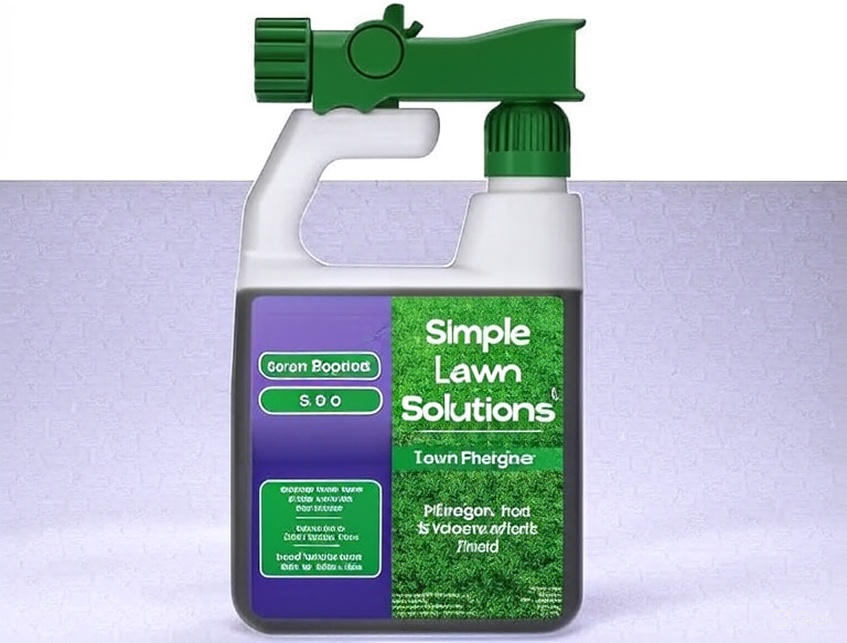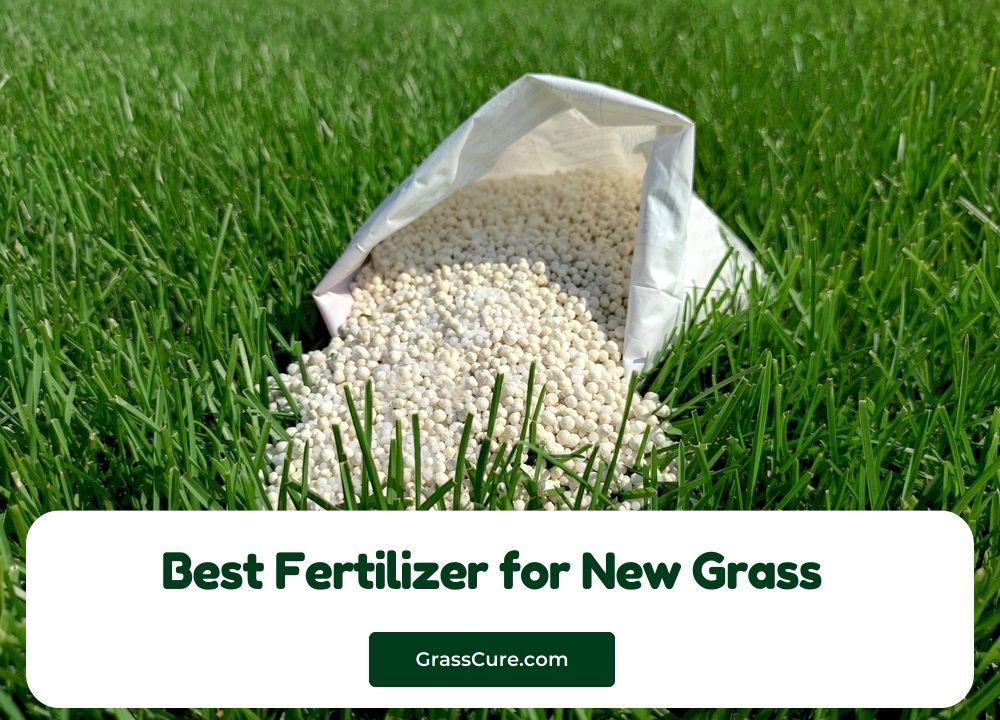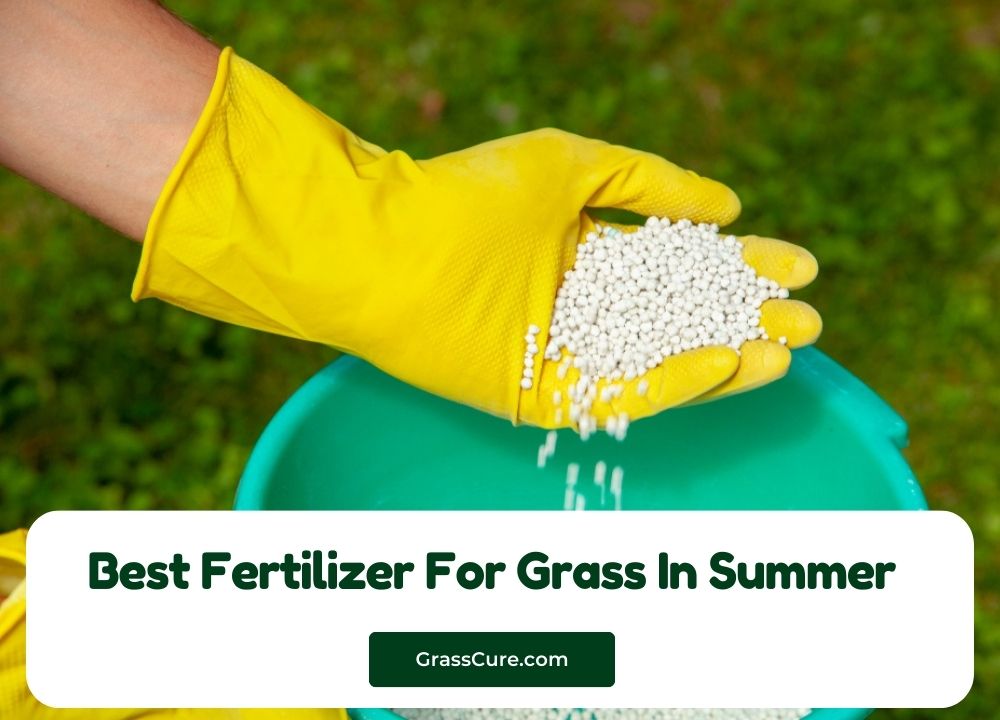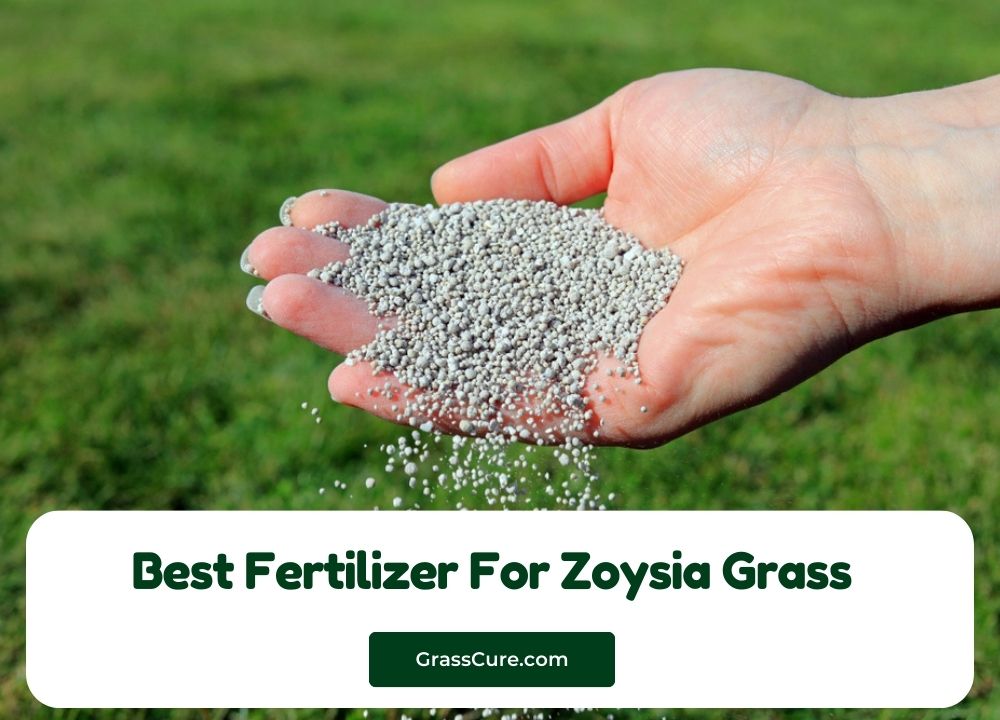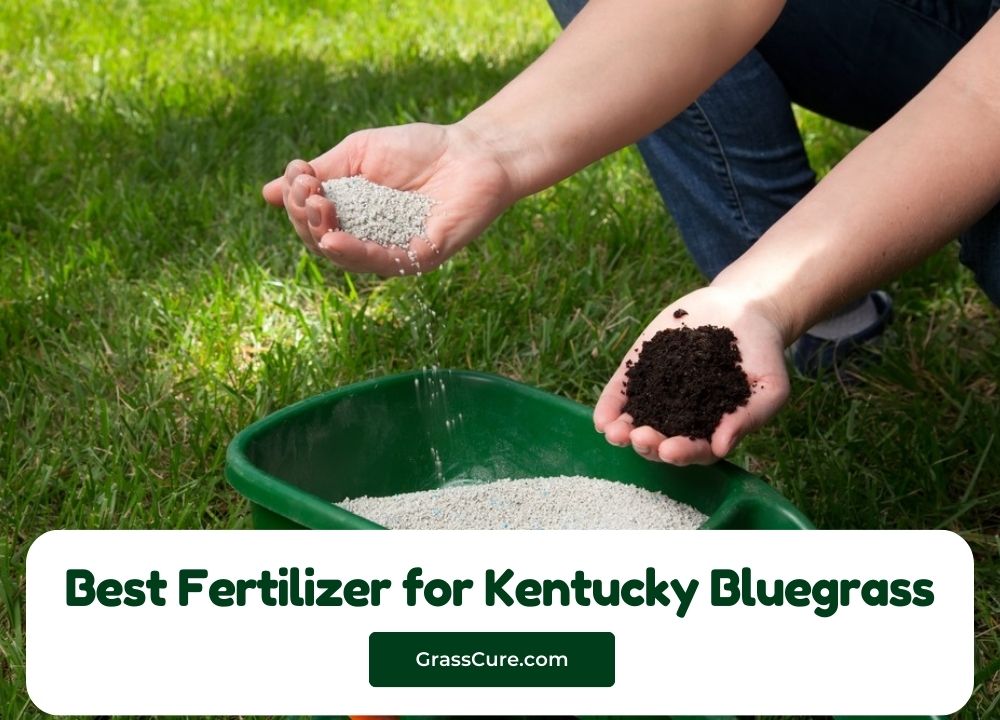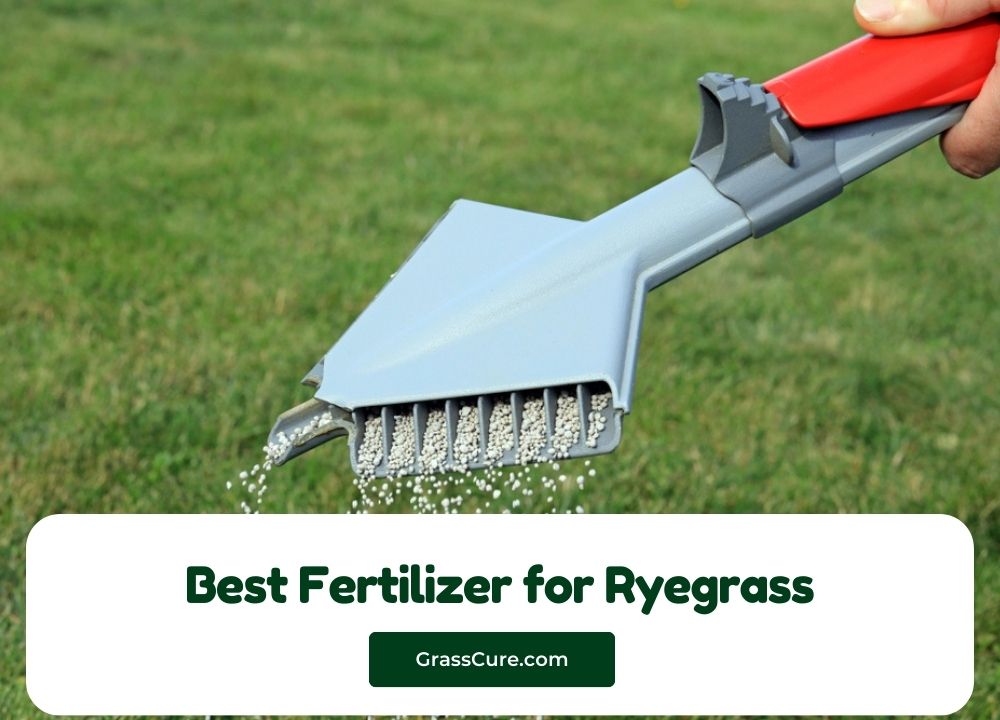Iron deficiency creates one of the most frustrating lawn problems homeowners face. Your grass turns yellow, loses its vibrant green color, and looks unhealthy despite your best efforts. The right iron supplement transforms your lawn from lackluster to lush within days.
This comprehensive guide examines the top iron products for grass, helping you choose the perfect solution for your lawn’s specific needs. We’ll explore liquid iron supplements, granular fertilizers with iron, and specialized formulas designed to restore your grass’s natural green color.
Contents
- Why Your Grass Needs Iron
- Signs Your Lawn Needs Iron
- Top 5 Iron Products for Grass: Detailed Reviews
- Understanding Iron Deficiency in Grass
- Choosing the Right Iron Product
- Application Timing and Techniques
- Seasonal Iron Requirements
- Measuring Iron Application Success
- Common Iron Application Mistakes
- Environmental Considerations
- Troubleshooting Iron Deficiency Problems
- Long-Term Iron Management
- Conclusion
Why Your Grass Needs Iron
Iron plays a crucial role in chlorophyll production, the green pigment that gives grass its vibrant color. When your lawn lacks sufficient iron, it develops chlorosis – a condition where grass blades turn yellow while the veins remain green. This distinctive yellowing pattern signals iron deficiency rather than nitrogen shortage.
Soil pH significantly affects iron availability. Alkaline soils with pH levels above 7.0 often lock up iron, making it unavailable to grass roots even when adequate amounts exist in the soil. Clay soils, overwatered lawns, and areas with poor drainage also contribute to iron deficiency problems.
Cool-season grasses like fescue, bluegrass, and ryegrass typically show iron deficiency symptoms during spring and early summer. Warm-season varieties including bermuda, zoysia, and St. Augustine grass often experience iron chlorosis during their active growing periods.
Signs Your Lawn Needs Iron
Yellow grass blades with green veins create the classic iron deficiency symptom. This interveinal chlorosis appears first on newer growth before spreading to older leaves. Unlike nitrogen deficiency, which causes uniform yellowing, iron deficiency creates a distinctive striped pattern.
Slow growth accompanies iron deficiency as grass struggles to produce adequate chlorophyll. Your lawn may appear thin, weak, and unable to compete with weeds. Moss growth often increases in iron-deficient areas since weakened grass cannot maintain density.
Soil testing reveals iron deficiency when available iron levels drop below 4-5 parts per million. However, total iron content may appear adequate while chelated or available iron remains insufficient for plant uptake.
Top 5 Iron Products for Grass: Detailed Reviews
1. Southern Ag Chelated Liquid Iron – Best Overall Value
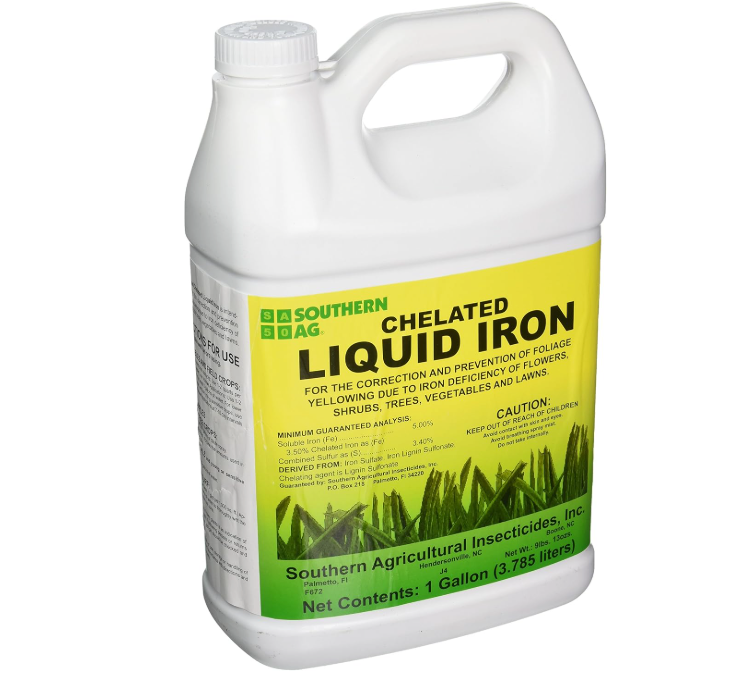
Southern Ag delivers professional-grade chelated iron in a convenient liquid format. This concentrated formula provides 6% iron in a form that grass can immediately absorb through both roots and foliage. The chelation process protects iron from soil binding, ensuring maximum availability.
Key Features:
- 6% chelated iron concentration
- One gallon treats large lawn areas
- Compatible with most grass types
- Professional-grade formulation
- Prevents iron tie-up in alkaline soils
Application and Coverage: Mix 1-2 ounces per gallon of water for foliar feeding or 3-4 ounces per gallon for soil application. One gallon concentrate treats approximately 16,000-32,000 square feet depending on dilution rate. Apply every 2-4 weeks during growing season for best results.
Performance Results: Grass typically shows greening within 48-72 hours of application. The chelated formula works effectively in alkaline soils where other iron sources fail. Users report excellent results on cool-season grasses, particularly fescue and bluegrass varieties.
Pros:
- Fast-acting chelated formula
- Excellent value for large lawns
- Works in alkaline soil conditions
- Professional-grade quality
- Versatile application methods
Cons:
- Requires mixing and spraying equipment
- May stain concrete if overapplied
- Concentrated formula needs careful measurement
Best For: Large lawns, alkaline soil conditions, homeowners wanting professional results
2. Scotts Green Max Lawn Food – Best All-in-One Solution
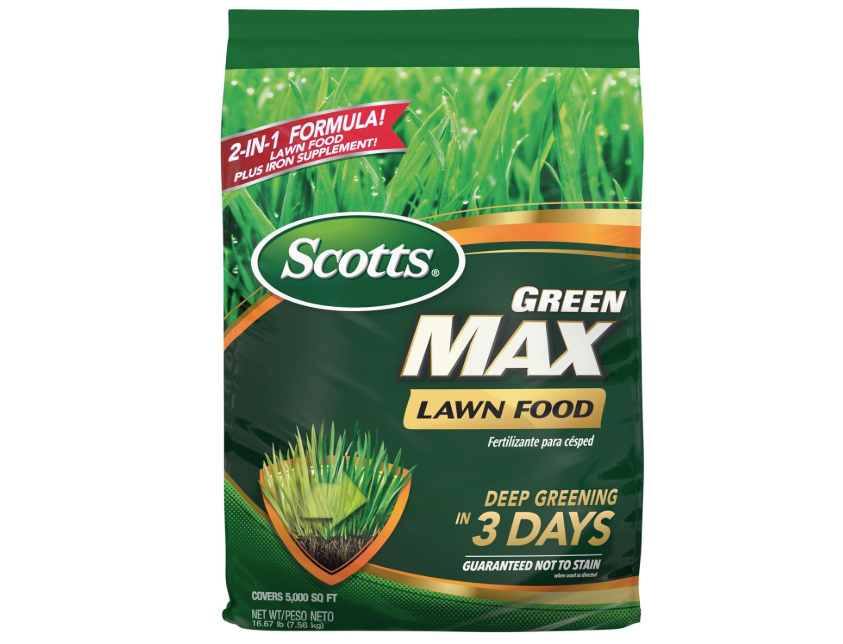
Scotts combines nitrogen fertilizer with iron supplement in this comprehensive lawn food. The formula provides 28-0-6 NPK ratio plus iron for complete grass nutrition. This granular product feeds grass while correcting iron deficiency in one application.
Key Features:
- 28-0-6 fertilizer with iron
- Covers 5,000 square feet
- Greens grass within 3 days
- Easy-to-apply granular format
- Feeds grass for 6-8 weeks
Application and Coverage: Apply 3.3 pounds per 1,000 square feet using a broadcast spreader. Water immediately after application to activate nutrients. One 16.67-pound bag covers exactly 5,000 square feet. Reapply every 6-8 weeks during growing season.
Performance Results: Grass shows noticeable greening within 72 hours as claimed. The nitrogen component provides immediate growth response while iron corrects yellowing. Cool-season grasses respond particularly well to this combination approach.
Pros:
- Complete nutrition in one product
- Easy granular application
- Proven 3-day greening results
- Widely available product
- Suitable for most grass types
Cons:
- Contains nitrogen which may promote excessive growth
- Limited to 5,000 square foot coverage
- Less iron concentration than specialized products
- May require more frequent applications
Best For: Small to medium lawns, homeowners wanting convenience, spring lawn feeding
3. Simple Lawn Solutions Lawn Energizer – Best Liquid Concentrate
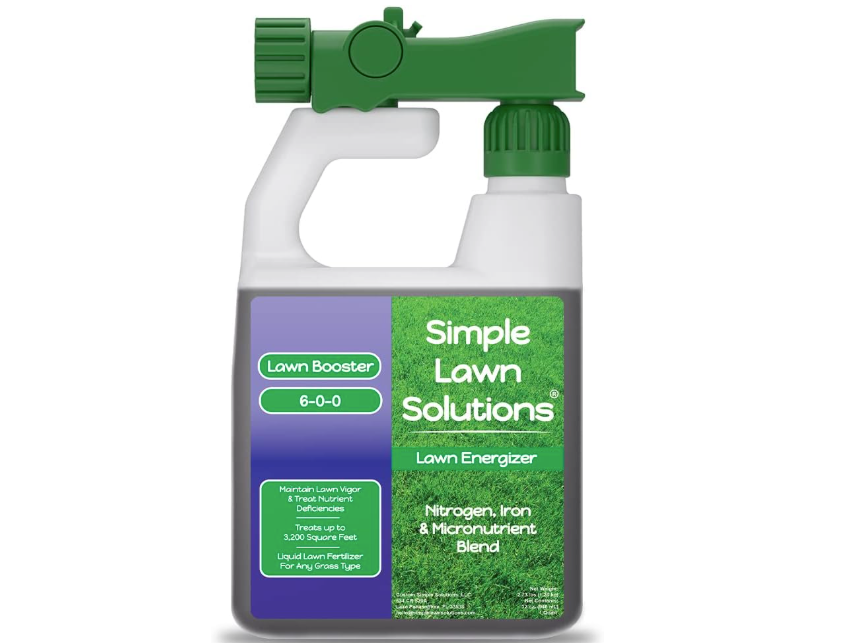
Simple Lawn Solutions creates a concentrated liquid fertilizer combining nitrogen and iron for rapid greening. This commercial-grade formula provides 15-0-0 NPK plus iron in a ready-to-use concentrate. The liquid format allows for quick absorption and immediate results.
Key Features:
- 15-0-0 fertilizer with iron
- Commercial-grade liquid concentrate
- 32-ounce bottle treats large areas
- Suitable for all grass types
- Professional landscaper formula
Application and Coverage: Mix 1 ounce per gallon of water for regular feeding or 2 ounces per gallon for deficient lawns. One 32-ounce bottle treats approximately 3,200-6,400 square feet depending on dilution rate. Apply every 2-3 weeks during growing season.
Performance Results: Grass typically greens within 24-48 hours of application. The liquid format provides faster results than granular products. Users report excellent results on both cool and warm-season grasses.
Pros:
- Fast-acting liquid formula
- Commercial-grade quality
- Treats large areas efficiently
- Works on all grass types
- Quick greening results
Cons:
- Requires mixing and application equipment
- More expensive per square foot
- Nitrogen content may promote rapid growth
- Potential for over-application
Best For: Professional landscapers, homeowners wanting quick results, spray application systems
4. Earth Science Iron Pro – Best Non-Staining Formula
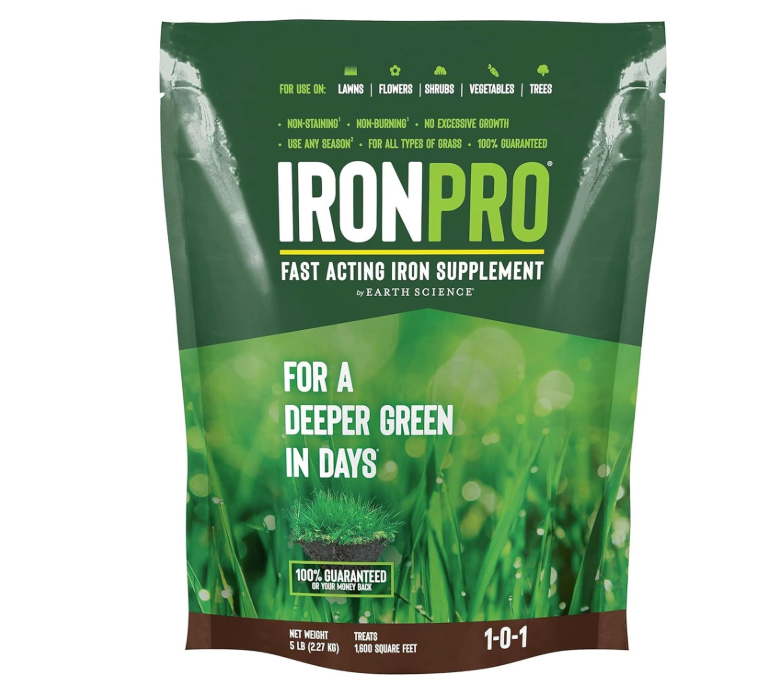
Earth Science develops a specialized iron supplement focused on safety and effectiveness. This formula provides fast-acting iron without staining concrete, sidewalks, or other surfaces. The non-burning formula safely greens grass without risk of damage.
Key Features:
- Non-staining, non-burning formula
- Fast-acting iron supplement
- Covers 1,600 square feet
- Safe for flowers and vegetables
- Easy-apply granular format
Application and Coverage: Apply 1 pound per 1,600 square feet using a broadcast spreader. Water lightly after application to activate iron. The 2.5-pound container provides coverage for 4,000 square feet total. Reapply every 4-6 weeks as needed.
Performance Results: Grass shows greening within 3-5 days of application. The non-staining formula provides peace of mind around sidewalks and driveways. Users appreciate the safety features and reliable results.
Pros:
- Non-staining formula
- Safe around concrete surfaces
- Easy granular application
- Multi-purpose for gardens
- Reliable greening results
Cons:
- Smaller coverage area
- Higher cost per square foot
- Slower results than liquid formulas
- Limited availability in some areas
Best For: Homeowners concerned about staining, areas near concrete, mixed garden applications
5. Liquid Iron Multi-Purpose – Best EDTA-Free Option
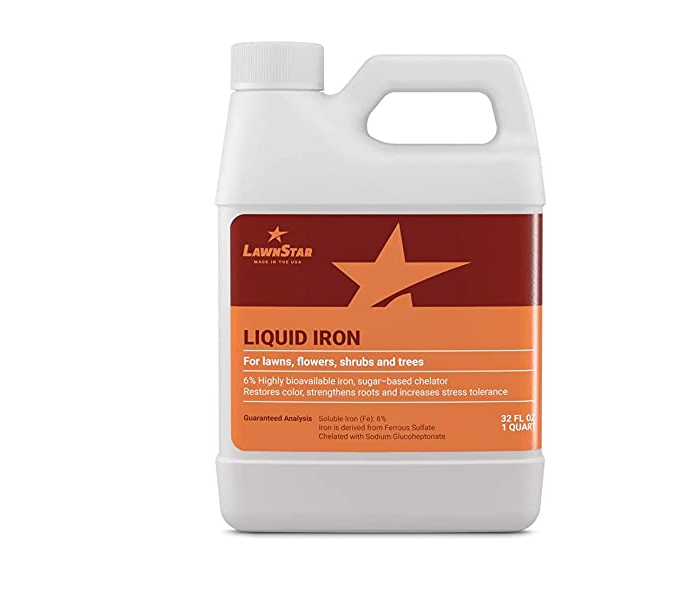
This American-made liquid iron provides a safer alternative to EDTA-chelated products. The formula treats iron deficiency without potentially harmful chelating agents. This multi-purpose solution works on lawns, flowers, shrubs, and trees.
Key Features:
- EDTA-free formulation
- American-made product
- Multi-purpose for all plants
- 32-ounce concentrated formula
- Treats various plant deficiencies
Application and Coverage: Mix 1-2 tablespoons per gallon of water for foliar application. One 32-ounce bottle treats approximately 5,000-10,000 square feet depending on dilution rate. Apply every 2-4 weeks during growing season.
Performance Results: Grass typically responds within 5-7 days of application. The EDTA-free formula provides slower but steady greening. Users report good results on sensitive grass varieties and organic lawn programs.
Pros:
- EDTA-free formulation
- Made in America
- Multi-purpose plant use
- Gentle on sensitive grasses
- Organic program compatible
Cons:
- Slower results than chelated products
- Higher cost per application
- Requires more frequent applications
- Limited availability
Best For: Organic lawn programs, sensitive grass varieties, multi-purpose plant feeding
Understanding Iron Deficiency in Grass
Iron deficiency develops through several mechanisms that limit grass access to this essential nutrient. High soil pH represents the most common cause, as alkaline conditions bind iron into unavailable forms. Soils with pH above 7.5 often contain adequate total iron but lack available iron for plant uptake.
Overwatering creates anaerobic soil conditions that interfere with iron availability. Waterlogged soils prevent iron from converting to forms that grass roots can absorb. Poor drainage exacerbates this problem, creating chronically wet conditions that limit iron uptake.
Phosphorus excess can induce iron deficiency by interfering with iron transport within grass plants. Soils with high phosphorus levels from overfertilization often show iron deficiency symptoms despite adequate iron content. This antagonistic relationship requires balanced fertilization approaches.
Cool temperatures slow iron uptake even when adequate amounts exist in soil. Spring iron deficiency often resolves naturally as soil temperatures warm. However, supplemental iron applications can accelerate recovery during cool periods.
Choosing the Right Iron Product
Liquid iron supplements provide the fastest results for severely deficient lawns. These products deliver iron directly to grass through foliar absorption, bypassing soil limitations. Chelated liquid formulas work best in alkaline soils where iron availability remains limited.
Granular iron products offer convenience and longer-lasting results. These slow-release formulas provide steady iron supply over several weeks. Granular products work well for maintenance applications and general lawn feeding programs.
Combination fertilizers with iron address multiple nutrient needs simultaneously. These products provide nitrogen for growth plus iron for color in one application. However, they may not contain sufficient iron for severely deficient lawns.
Soil pH testing helps determine the best iron product for your specific conditions. Alkaline soils require chelated iron products that resist binding. Acidic soils may benefit from simple iron sulfate applications.
Application Timing and Techniques
Spring applications provide the greatest benefit as grass emerges from dormancy. Cool-season grasses often show iron deficiency during spring growth periods. Apply iron supplements when temperatures consistently reach 60-70°F for optimal uptake.
Early morning applications maximize iron absorption while minimizing plant stress. Avoid applications during hot afternoon periods when grass experiences water stress. Calm wind conditions prevent drift and ensure even coverage.
Watering schedules affect iron uptake and product effectiveness. Light watering after granular applications activates iron release. However, excessive watering can wash away foliar-applied products before absorption occurs.
Tank mixing compatibility varies among iron products and other lawn chemicals. Test small areas before applying iron supplements with pesticides or other fertilizers. Some combinations can cause grass burn or reduce product effectiveness.
Seasonal Iron Requirements
Spring iron applications correct deficiencies that develop during winter dormancy. Cool-season grasses benefit from early spring iron as they begin active growth. Apply iron supplements when grass shows first signs of green-up.
Summer iron needs vary by grass type and growing conditions. Warm-season grasses may require iron during peak growth periods. Cool-season grasses often need iron during stress periods when uptake slows.
Fall iron applications prepare grass for winter dormancy. Iron helps maintain green color longer into the season. However, avoid heavy applications that stimulate late-season growth vulnerable to frost damage.
Winter iron applications provide minimal benefit to dormant grass. Focus iron supplementation efforts during active growing seasons when grass can effectively utilize nutrients.
Measuring Iron Application Success
Visual grass color improvement provides the most obvious success indicator. Healthy grass should display uniform green color without yellow striping. Compare treated areas to untreated sections to assess product effectiveness.
Growth rate changes often accompany successful iron applications. Iron-sufficient grass maintains steady growth without excessive spurts. Balanced nutrition supports consistent lawn development throughout the growing season.
Soil testing confirms iron availability improvements in alkaline soils. Test available iron levels before and after treatment to measure product effectiveness. Maintain available iron levels above 4-5 parts per million for optimal grass health.
Photographic documentation helps track long-term iron program success. Take pictures from consistent locations and lighting conditions. Compare images over time to assess overall lawn improvement.
Common Iron Application Mistakes
Over-application represents the most common iron mistake homeowners make. Excessive iron can cause grass burn, root damage, and environmental problems. Always follow label directions and avoid the temptation to use higher rates.
Improper timing reduces iron effectiveness and may damage grass. Avoid applications during drought stress, extreme heat, or when grass is wet from dew or irrigation. Timing applications properly maximizes results while minimizing risks.
Mixing incompatible products can cause grass damage or reduce effectiveness. Read all product labels carefully before tank mixing. Test small areas first when combining iron supplements with other lawn chemicals.
Ignoring soil pH leads to continued iron deficiency problems. Address underlying pH issues through soil amendments rather than relying solely on iron supplementation. Lime applications may be necessary to optimize iron availability.
Environmental Considerations
Iron runoff can stain sidewalks, driveways, and building surfaces. Choose non-staining formulas for applications near hardscapes. Sweep granular products off concrete surfaces immediately after application.
Water quality affects iron product performance and environmental impact. Hard water with high mineral content can interfere with iron uptake. Consider water quality when selecting iron products and application methods.
Beneficial insect populations generally tolerate iron applications well. However, some chelated iron products may affect soil microorganisms. Choose products with minimal environmental impact when possible.
Organic lawn programs require careful iron product selection. EDTA-free formulas align better with organic principles. Research product ingredients and certifications before use in organic lawn programs.
Troubleshooting Iron Deficiency Problems
Persistent iron deficiency despite regular applications suggests underlying soil problems. Test soil pH and drainage conditions to identify limiting factors. Address fundamental soil issues before continuing iron supplementation.
Uneven grass response to iron applications indicates application problems or soil variability. Check spreader calibration and application patterns. Soil compaction may limit iron uptake in specific areas.
Temporary greening followed by yellowing suggests inadequate iron rates or timing. Increase application frequency or concentration as needed. Monitor grass response and adjust programs accordingly.
Iron deficiency symptoms on only certain grass varieties indicate species-specific problems. Some grass types require more iron than others. Adjust iron programs based on specific grass requirements.
Long-Term Iron Management
Sustainable iron programs balance effectiveness with environmental responsibility. Develop consistent application schedules based on grass response and soil conditions. Avoid reactive approaches that lead to over-application.
Soil improvement efforts reduce long-term iron supplementation needs. Organic matter additions improve iron availability and retention. Proper drainage prevents waterlogging that limits iron uptake.
Regular soil testing guides iron management decisions. Test available iron levels annually to track program effectiveness. Adjust iron applications based on soil test results rather than visual symptoms alone.
Professional consultation helps develop optimal iron management programs. Soil scientists and agronomists can provide site-specific recommendations. Consider professional help for persistent iron deficiency problems.
Conclusion
Iron deficiency transforms beautiful lawns into yellow, unhealthy-looking turf that frustrates homeowners. The right iron supplement quickly reverses this condition, restoring vibrant green color within days. Our comprehensive review examined five top iron products, each offering unique advantages for different lawn situations.
Southern Ag Chelated Liquid Iron provides the best overall value with professional-grade results at reasonable cost. This concentrated formula works effectively in alkaline soils and treats large areas efficiently. Homeowners with extensive lawns and challenging soil conditions will appreciate its performance.
Scotts Green Max offers convenient all-in-one nutrition combining fertilizer with iron supplement. This granular product provides complete grass feeding while correcting iron deficiency. Homeowners seeking simplicity and proven results will find this combination approach appealing.
Simple Lawn Solutions Lawn Energizer delivers commercial-grade liquid fertilizer with iron for rapid greening. Professional landscapers and homeowners wanting quick results will appreciate its fast-acting formula. The concentrate format provides excellent coverage for large areas.
Earth Science Iron Pro stands out for its non-staining, non-burning formula that safely greens grass without surface damage. Homeowners concerned about staining concrete surfaces will find this product particularly valuable. The safety features make it ideal for areas near sidewalks and driveways.
Liquid Iron Multi-Purpose provides an EDTA-free alternative for organic lawn programs and sensitive grass varieties. This American-made product offers gentler iron supplementation without potentially harmful chelating agents. Environmentally conscious homeowners will appreciate its safer formulation.
Success with iron supplementation requires understanding your specific soil conditions and grass requirements. Test soil pH to determine iron availability limitations. Choose products appropriate for your soil type and application preferences. Time applications during optimal growing conditions for maximum effectiveness.
Remember that iron supplements address symptoms rather than underlying causes. Improve soil drainage, adjust pH levels, and manage watering practices to reduce long-term iron deficiency problems. Sustainable lawn care combines appropriate iron supplementation with fundamental soil improvement.
Your lawn deserves the vibrant green color that proper iron nutrition provides. Choose the iron product that best matches your specific needs and application preferences. With consistent application and proper timing, you’ll enjoy the lush, green lawn you’ve always wanted.
